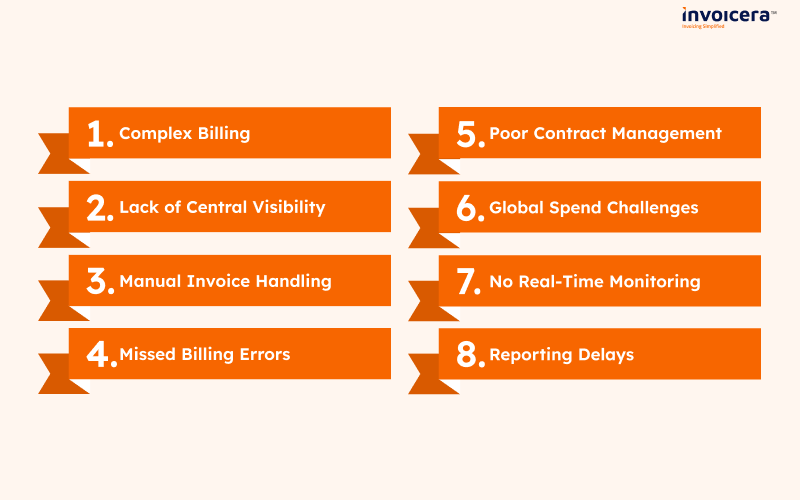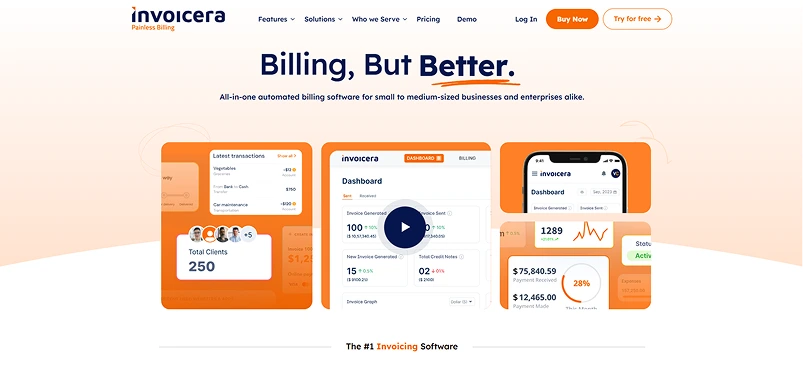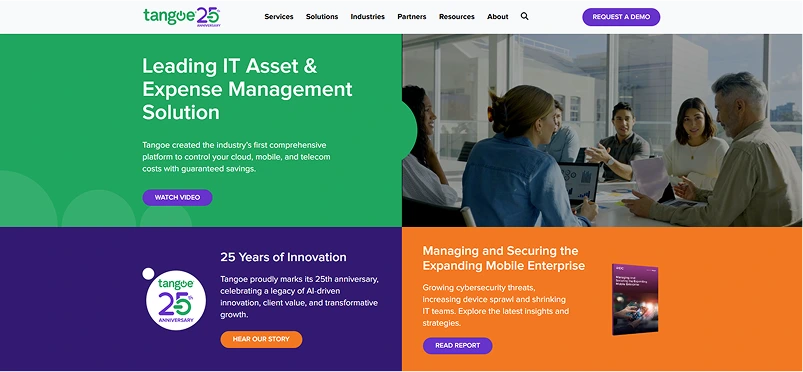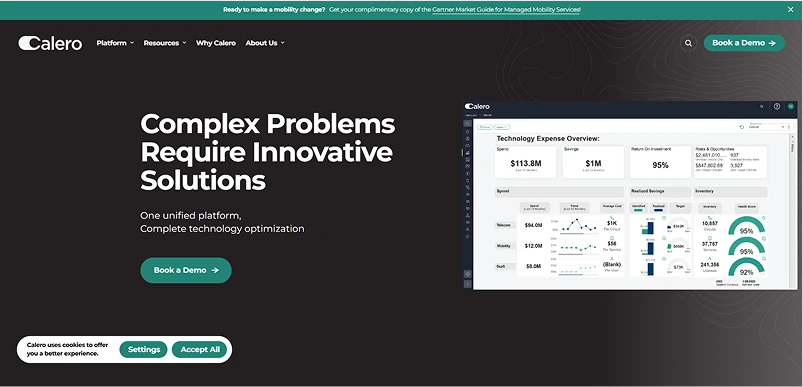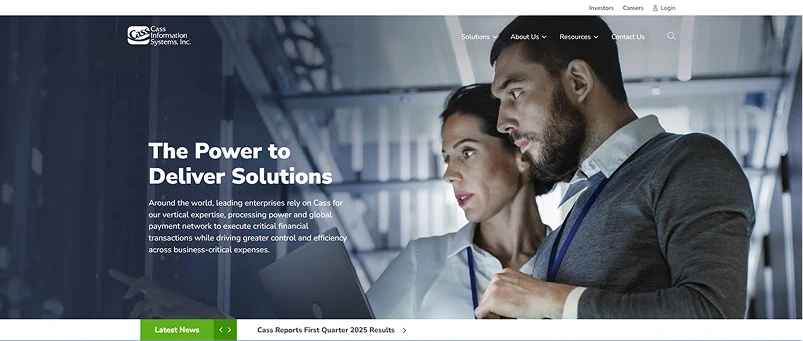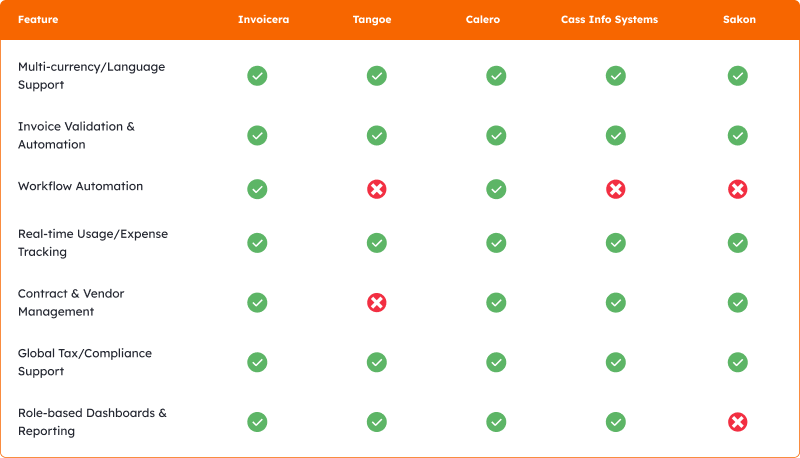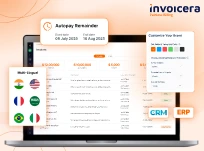Not long ago, a growing business was losing track of its telecom spend; multiple vendors, overlapping contracts, and confusing invoices. Costs kept rising, but no one knew why.
Sound familiar?
As companies scale, managing telecom expenses becomes increasingly complex. What starts with a few lines quickly becomes a mess of mobile plans, cloud tools, and global services.
This is where telecom expense management software comes in. It simplifies billing, increases visibility, and puts teams back in control.
In this blog, we’ll cover:
- What to look for
- Key challenges telecom expense management (TEM) solves
- Top software options built for growing businesses
Challenges in Manual Telecom Expense Management
Dealing with telecom expenses manually can lead to burnout in a short period. Errors and lost efficiency often happen when dealing with lengthy bills, messy information, and conventional work methods.
These are some major problems businesses face, and a Telecom Expense Management (TEM) system is designed to fix them:
1. Complex Billing
Manual Challenge:
- Invoices from multiple vendors often contain confusing charges, making verifying accuracy and understanding total costs difficult.
How TEM Solves It:
- Telecom expense management solutions combine all billing data into a single platform, simplify invoice breakdowns, and clarify charges for easier validation.
2. Lack of Central Visibility
Manual Challenge:
- Spending and usage information is scattered across departments, preventing a clear, company-wide view of telecom expenses.
How TEM Solves It:
- Telecom expense management software centralizes data from all sources, providing real-time dashboards and reports that offer complete visibility across the organization.
3. Manual Invoice Handling
Manual Challenge:
- When invoices are manually processed in large quantities, it is both slow and can lead to errors
How TEM Solves It:
- Automation makes invoice collection, checking, and signing much easier, minimizing errors and the effort required.
4. Missed Billing Errors
Manual Challenge:
- Duplicate, incorrect, or fraudulent charges often go unnoticed without automated checks.
How TEM Solves It:
- Telecom billing software automatically detects anomalies and flags suspicious charges for review before making payments.
5. Poor Contract Management
Manual Challenge:
- Manually tracking contract terms, expiration dates, and negotiated discounts leads to missed opportunities and overspending.
How TEM Solves It:
- Contract management features store and monitor agreements, send alerts for renewals, and ensure compliance with negotiated terms.
6. Global Spend Challenges
Manual Challenge:
- Handling telecom expenses across multiple countries involves complex currency conversions, tax regulations, and billing formats.
How TEM Solves It:
- Telecom expense management services support multi-currency billing, automate tax calculations, and standardize reporting for international telecom spend.
7. No Real-Time Monitoring
Manual Challenge:
- Businesses can’t quickly identify unusual usage or cost spikes without live tracking.
How TEM Solves It:
- Real-time monitoring tools provide instant alerts on usage patterns and unexpected charges to enable proactive management.
8. Reporting Delays
Manual Challenge:
- Manual data collection and report generation cause delays, slowing decision-making.
How TEM Solves It:
- Automatic reporting provides the latest and correct data on telecom expenses whenever a team needs it.
Thus, a telecom expense management system addresses these issues by automating processes, providing visibility and control, and allowing businesses to save time and money.
Top 5 Telecom Expense Management Software
Here are five top telecom expense management solutions offering trusted features, flexibility, and enterprise-grade performance:
1. Invoicera
Invoicera provides enterprise-focused telecom expense management software along with invoicing and billing automation solutions.
It lets businesses oversee telecom use, administer several service provider contracts and use strong automation to manage invoices.
Key Features
- Multi-currency and multi-language support
- Automated invoice validation
- Custom workflow automation
- Real-time expense tracking and reporting
- Vendor and contract management
Benefits
- Reduces manual workload through automated invoice processing.
- Enhances financial accuracy with real-time telecom cost visibility.
- Scales easily across global telecom operations.
- Simplifies compliance with contract terms and internal policies.
Limitations
- Requires configuration time to align with complex telecom structures
- May need third-party integrations for deeper telecom analytics
Pricing
- Pricing plans starts at $15/month per user. Custom enterprise plans are available based on requirements.
2. Tangoe
Tangoe is a long-standing telecom expense management and lifecycle management leader.
It offers a comprehensive platform for global enterprises, covering mobile, fixed, and cloud services with advanced automation and analytics.
Key Features
- Lifecycle management for mobile, fixed, and cloud
- AI-powered analytics and automation
- Global invoice processing and auditing
- Inventory and usage tracking
- Workflow and policy enforcement tools
Benefits
- Centralizes and automates global telecom operations.
- Finds ways to cut costs using data that is analyzed on the spot.
- Improves the way contracts and vendors are handled.
Limitations
- Complexity of setup for small to mid-sized companies.
- Steep learning curve for new users.
Pricing
- Custom pricing based on service modules and scale.
3. Calero
Calero helps companies manage their telecom and technology costs with insights, control, and savings.
It is designed to simplify operations and provide actionable insights through its robust telecom expense management software.
Key Features
- Unified telecom and mobility management
- Invoice validation and dispute management
- Real-time usage analytics
- Global tax and compliance support
- Role-based dashboards and reporting
Benefits
- Combining telecom expense data into a single source of truth using advanced telecom expense management solutions.
- Minimizes mistakes in billing and finds chances to save the business money.
- Helps companies meet the many regulations in their industries.
Limitations
- Interface may feel outdated compared to newer platforms.
- Reporting can require customization to meet specific needs.
Pricing
- Available on request; pricing depends on deployment size and features.
4. Cass Information Systems
Cass offers enterprise-grade telecom expense management software that focuses on payment accuracy and financial accountability.
Its services are designed for large organizations with high telecom volumes.
Key Features
- Bill payment and audit services
- Asset and inventory tracking
- Cost allocation and reporting tools
- Contract lifecycle management
- Integration with ERP systems
Benefits
- Improves payment accuracy and accountability.
- Integrates deeply with existing financial systems as a robust telecom expense management system.
- Offers white-glove support for complex enterprises.
Limitations
- Less flexible for small or fast-scaling companies.
- Primarily suited for companies with high invoice volumes.
Pricing
- Custom pricing based on volume and services selected.
5. Sakon
Sakon helps large enterprises manage telecom and network services through an advanced, cloud-based telecom expense management software platform.
It focuses on inventory clarity, cost optimization, and seamless lifecycle management.
Key Features
- Centralized inventory management
- Usage analytics and reporting
- Invoice automation and contract governance
- Network lifecycle services
- Global compliance tracking
Benefits
- Boosts operational visibility across all telecom assets.
- Streamlines network management and vendor relationships.
- Reduces telecom spend through accurate forecasting and efficient estimates & expense management software.
Limitations
- May require dedicated onboarding resources.
- Not as intuitive for users unfamiliar with network lifecycle management.
Pricing
- Quote-based, tailored to organization size and telecom complexity.
Whether you’re looking to reduce costs, gain better visibility, or automate invoice workflows, these five platforms are among the most powerful in the telecom expense space.
Comparison Table
Why Choose Invoicera for Telecom Expense Management?
Invoicera is one of the most flexible telecom expense management software tools today. It is enabling businesses manage telecom bills and expenses – stress free and straightforward.
With Invoicera telecom businesses can:
- Track all their telecom costs
- Avoid mistakes
- Automate many tasks and save time
Here’s why Invoicera is a great choice:
- Automated Bill Handling: It automatically checks and processes your telecom invoices, so you don’t have to do it manually or worry about errors.
- Easy Contract Management: Keep all your vendor contracts organized, track when they renew, and adhere to the agreed-upon terms.
- See Expenses in Real Time: Get instant updates on your telecom spending across different teams and locations.
- Supports Global Business: Works with different currencies and languages, perfect if your business operates in multiple countries.
- Custom Workflows: You can set it up to match how your company approves bills and manages expenses, making it a good fit for your team.
- Grows with Your Business: Whether you’re small or large, Invoicera scales to your needs while keeping your data safe.
With Invoicera, telecom expense management for businesses becomes easier, more accurate, and gives you a clear picture of your costs; helping your business run smoother.
Closing Thoughts
Choosing the proper telecom expense management software can change how your business pays its phone and internet bills.
- It makes fewer mistakes
- Saves time
- Allows you to manage your spending easily
In short, the most effective telecom expense management software handles your telecom expenses well and efficiently.
FAQs
Ques: Why do businesses need telecom expense management software?
Ans: Telecom expense management software helps avoid invoice mistakes, makes it easier to see cost details, automates invoice processing, and manages vendor contracts well.
Ques: How does telecom expense management software save money?
Ans: By identifying billing errors, tracking usage, enforcing contracts, and highlighting cost-saving opportunities.
Ques: Is telecom expense management software suitable for small businesses?
Ans: Yes, many solutions scale from small to large businesses, with features adapted to different sizes and needs.
Ques: What features should I look for in telecom expense management software?
Ans: Important features are invoicing automation, tracking expenses as they happen, contract handling, working in various currencies, and customizable ways of handling processes.
Ques: Can telecom expense management software handle global operations?
Ans: Yes, top solutions support multiple currencies and languages and comply with international tax rules.

